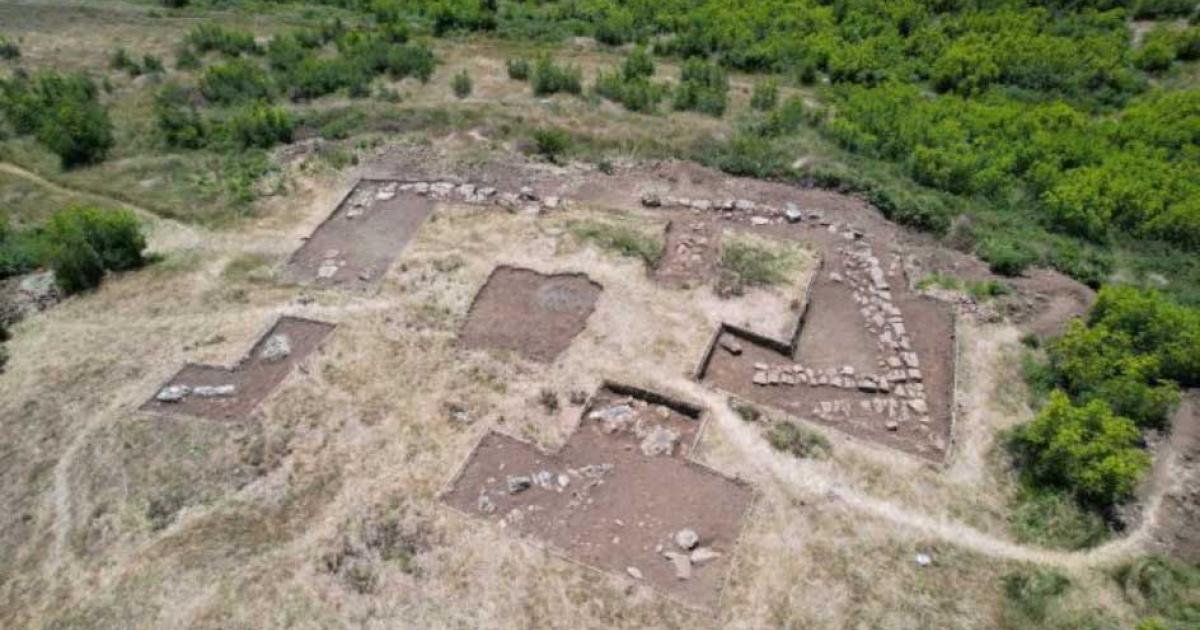
Has the Lost Illyrian City of Bassania Finally Been Exposed in Albania?
Archaeologists believe they are uncovering the lost city of Bassania, an ancient Illyrian settlement mentioned by Livy as lying between two important ancient centers - the Illyrian capital of Shkodër and the Greek city of Lissos. The archaeological site lies on a hilltop near the modern village of Bushat in what is now Albania.
The latest dig was conducted by a team of archaeologists from the Southeastern Europe Research Center of the University of Warsaw and the Institute of Archeology in Tirana, reports the Polish news portal Science in Poland. The first traces of the city were found in 2018 in the form of defensive walls and two stone structures.
Hidden in the Landscape
The stone structures had always been thought to be natural rock outcrops but were discovered to be a gatehouse and two bastions. The strong, 3 meter (9.8 feet) thick wall is a cyclopean construction with massive stone blocks packed tightly against each other, and earth and pebbles filling in any gaps. The archaeologists explained that this a typical Hellenistic defensive structure.
Ancient coins and fragments of ceramic vessels found near the walls were dated between the fourth and first centuries BC, further confirming that the city was part of the Illyrian kingdom.

Cut rock were used to construct substantial walls. (M. Lemke/ Science in Poland)
The Lost City of Bassania
Bassania was an Illyrian city that passed under Roman control during the Illyrian Wars. However, exactly when this happened is not known. Bassania has been described by the Roman historian Livy (59 BC-17AD) in the context of the battles between the last king of Illyria, Gentius, and Roman troops. The city seems to have existed until the beginning of the first century AD, which coincided with the end of the reign of Roman emperor Octavian Augustus.
The newly discovered site for Bassania competes with an older identification of the ancient city with the village of Pedhanë on the river Mat in Lezhë County.
- Two Ancient Palaces Unearthed in Montenegro Were Home to Famous Illyrian Rulers
- The Fierce Queen of the Illyrians: Teuta the Untameable

The excavation site on a hill next to the village of Bushat during archaeological research. (M. Lemke / Science in Poland)
The New Discoveries at Bushat
For the recent excavations, the team conducted geophysical surveys of the hill that revealed a massive settlement spread over 20 hectares (49 acres). This is three times the size of ancient Shkodër. The survey drew attention to structures that resembled solid walls.
Professor Piotr Dyczek, director of the Southeastern Europe Research Center, said that this year the highest part of the city, just below the top of the hill, was excavated. “During our work in May this year, we uncovered the foundations of two large buildings here,” he added, according to the Science in Poland report . Each of the buildings covered an area nearly 20 meters (65 feet) by 12 meters (39 feet). At a little distance, a smaller structure 10 meters (32 feet) by 7 meters (23 feet) was also uncovered.
- Rare Greek-Illyrian Helmet Found in Croatia
- Butrint National Park, Preserving the Rise and Fall of an Ancient City
So far the archaeologists haven’t established the purpose of the buildings. However, they say they were different from others in the area and likely to have had an important function. The structures have solid foundations 90 centimeters (36 inches) wide. Local conglomerate stone was utilized in their construction and no mortar was used. Their roofs were covered with Greek-style tiles.
The city doesn’t show any signs of a violent end through destruction or fire but seems to have been abandoned and left to the elements. Natural erosion, with the city walls slowly sliding down the hillside for years, combined with centuries of pilfering of the stone blocks as building material by local villagers caused the city to fall to ruin.
The archaeologists have been fortunate enough, though, to find ancient pottery fragments at the site that have escaped erosion and human foraging. Analysis of the fragments has helped them establish that the hillside was inhabited as early as the second millennium BC and was abandoned as a settlement site only around the turn of the millennium or a little later.
Fragments of Italian amphorae dating to the third and second centuries BC, and skyphos, Greek wine-drinking vessels with horizontal handles, were found in the structures at the primary occupation level. “Many of them are very small. In ancient times such miniature dishes were either toys or votive offerings. It is difficult to say what functions they currently serve in our position, “said Professor Dyczek.
Further research will be directed to establishing the purpose of the recently uncovered structures and the tiny ceramic artifacts. It is to be hoped, it will also conclusively identify whether the site is indeed the lost ancient city of Bassania.
Top image: Excavation site of the settlement believed to be Bassania, on a hill near Bushat village, Albania. Source: M. Lemke / Science in Poland
By Sahir Pandey
References
Altuntas, L. 2022. Archaeologists may have found the lost 2,000-year-old ancient city of Bassania in Albania. Available at: https://arkeonews.net/archaeologists-may-have-found-the-lost-2000-year-old-ancient-city-of-bassania-in-albania/.
Heritage Daily. 2022. Archaeologists find ancient city from Hellenistic Period. Available at: https://www.heritagedaily.com/2022/06/archaeologists-find-ancient-city-from-hellenistic-period/143914.
Zdzieblowski, S. 2022. Albania / The Lost Ancient City in the Target of Polish Archaeologists. Available at: https://naukawpolsce.pl/aktualnosci/news%2C92683%2Calbania-zaginione-antyczne-miasto-na-celowniku-polskich-archeologow.html.















